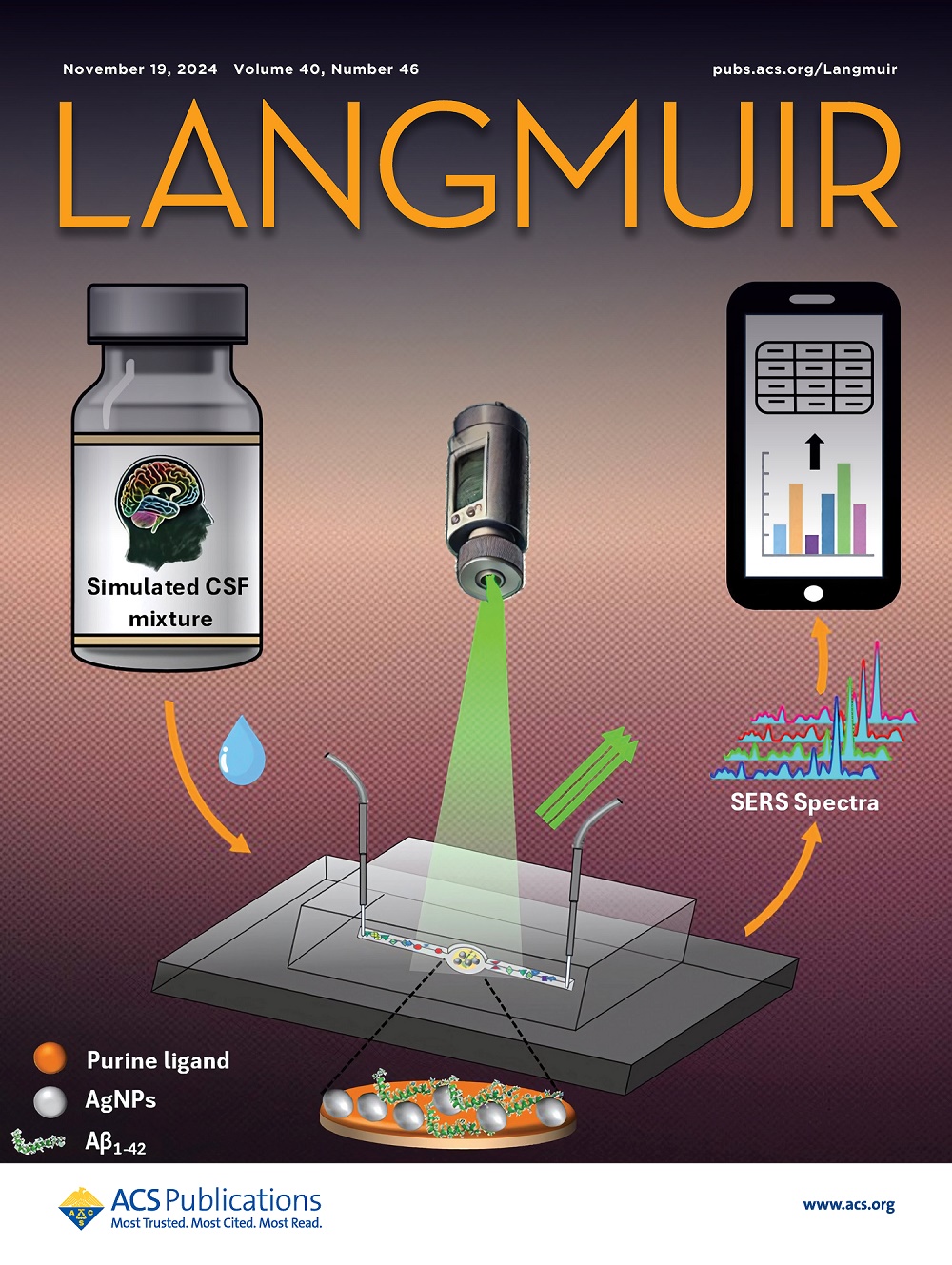肽分子构象在提高脂质体基因传递效率中的作用
IF 3.7
2区 化学
Q2 CHEMISTRY, MULTIDISCIPLINARY
引用次数: 0
摘要
本研究通过设计两组不同序列的线性肽(liKK和liRR)和环状肽(cyKK和cyRR) (KK: kkkkcrgdsckkkkk和RR: RRRRCLLLLCRRRR),探讨了肽构象对核酸转染效率的影响。在脂质体制剂中加入多肽比单独使用肽和1,2-二酰-3-三甲基丙烷(DOTAP)/1,2-二酰- sn3 -甘油-3-磷酸乙醇胺(DOPE)提高了基因转染效率。结果表明,在转染配方中,与环状肽相比,添加线性肽具有更高的传递效率。此外,还建立了两组有效的转染配方。liKK/DOTAP/DOPE配方在传递mRNA方面表现出色,转染效率为93.3%,与Lipofectamine 2000的转染效率(91.7%)相当。相比之下,liRR/DOTAP/DOPE配方有效地递送pDNA和siRNA。pDNA转染效率达到42.3%,接近Lipofectamine 2000的43.9%,siRNA转染效率达到90.7%,超过Lipofectamine 2000的85.4%。线性构象分子式的转染效率优于环状构象分子式。我们的研究为脂质体配方提供了新的选择,并为设计不同构象的基于肽的基因传递载体提供了有价值的见解。本文章由计算机程序翻译,如有差异,请以英文原文为准。

Role of Peptide Molecular Conformation in Improving the Gene Delivery Efficiency of Liposomal Formulations
The study explored the impact of peptide conformations on the efficiency of nucleic acids transfection by designing two sets of linear (liKK and liRR) and cyclic peptides (cyKK and cyRR) with various sequences (KK: KKKKCRGDSCKKKK and RR: RRRRCLLLLCRRRR). Incorporating peptides in the liposome formulation improved gene transfection efficiency compared to the peptide and 1,2-dioleoyl-3-trimethylammonium-propane (DOTAP)/1,2-dioleoyl-sn-glycero-3-phosphoethanolamine (DOPE) alone. The results revealed that adding linear peptides demonstrated a higher delivery efficiency in comparison to cyclic peptides in transfection formulations. Additionally, two effective groups of transfection formulations were established. The liKK/DOTAP/DOPE formulation proved exceptional at delivering mRNA, achieving a transfection efficiency of 93.3%, comparable to that of Lipofectamine 2000 (91.7%). In contrast, the liRR/DOTAP/DOPE formulation effectively delivered both pDNA and siRNA. The pDNA transfection efficiency reached 42.3%, closely matching Lipofectamine 2000 (43.9%), while the siRNA transfection efficiency hit 90.7%, surpassing Lipofectamine 2000’s performance (85.4%). The transfection efficiency of linear conformational formulations is superior to that of cyclic ones. Our research provides new options for liposome formulations and offers valuable insights for designing peptide-based gene delivery vectors with different conformations.
求助全文
通过发布文献求助,成功后即可免费获取论文全文。
去求助
来源期刊

Langmuir
化学-材料科学:综合
CiteScore
6.50
自引率
10.30%
发文量
1464
审稿时长
2.1 months
期刊介绍:
Langmuir is an interdisciplinary journal publishing articles in the following subject categories:
Colloids: surfactants and self-assembly, dispersions, emulsions, foams
Interfaces: adsorption, reactions, films, forces
Biological Interfaces: biocolloids, biomolecular and biomimetic materials
Materials: nano- and mesostructured materials, polymers, gels, liquid crystals
Electrochemistry: interfacial charge transfer, charge transport, electrocatalysis, electrokinetic phenomena, bioelectrochemistry
Devices and Applications: sensors, fluidics, patterning, catalysis, photonic crystals
However, when high-impact, original work is submitted that does not fit within the above categories, decisions to accept or decline such papers will be based on one criteria: What Would Irving Do?
Langmuir ranks #2 in citations out of 136 journals in the category of Physical Chemistry with 113,157 total citations. The journal received an Impact Factor of 4.384*.
This journal is also indexed in the categories of Materials Science (ranked #1) and Multidisciplinary Chemistry (ranked #5).
 求助内容:
求助内容: 应助结果提醒方式:
应助结果提醒方式:


